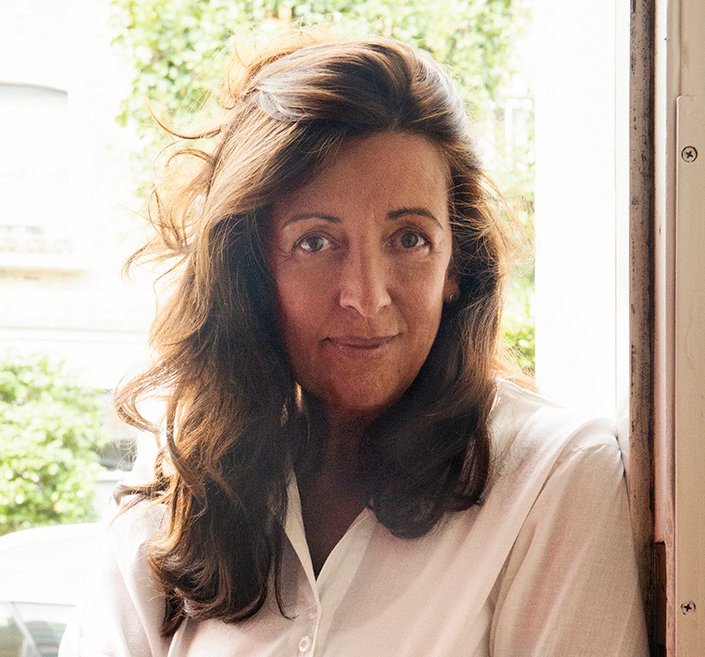
‘That day in the Vondelpark; it was grey, which helped.’ This line came to me this spring, in April to be precise, when I was in Amsterdam trying to hunt down my next novel. It was a grey day. I had been wandering around the city for a week, staring into canals and up at wonky buildings, sitting in cafés drinking coffee and eating cardamom buns – with an empty notebook on the table in front of me.
I was hoping to encounter my next book, in the way that a lovelorn woman might walk around a pretty foreign city hoping to meet another lover. So far, all I had got out of the trip was a pleasing increase in my daily step count and a huge bill – Amsterdam is fiendishly expensive.
But what do you do when you’re in the phase of creativity that I might as well call ‘pre-technique’, where all your strategies for plot construction or character development are useless – because you don’t have the foggiest idea what your book is about?
That much-derided question that authors are often asked, ‘Where do you get your ideas from?’, actually has a point.
Words emerge from thoughts, after all, and thoughts happen when the synapses in your brain are prompted to join up by something. (I’m only guessing on the biology here, neuroscience isn’t my strong point.) Even when you have an ‘idea’ for a novel, that’s only the beginning.
The initial inspiration for Bernardine Evaristo’s Booker-Prize-winning novel Girl, Woman, Other came when she was invited to write a 2,000-word short story-in-verse for BBC Radio 4. She wrote a piece about four Black women, one of whom was trans. ‘By the time it was completed,’ she says, ‘I realised that I wanted to take this idea further, and that my next novel would be peopled by a multitude of different Black women. The idea excited me and I felt passionate about it.’
But even for a writer as accomplished and experienced as Evaristo, that excitement is only the beginning of the process. ‘I sometimes turn ideas over in my head for months or even years before settling on the story that will hopefully become a novel,’ she says. A short story might be a single idea, but a novel lasting hundreds of pages is a more complex beast requiring scores of them. ‘My ideas come from everywhere: from the society I live in, history, the news, my observations of humankind, my politics, other arts forms.’
All writers are products of, and are nurtured by, the world around them, the context in which they exist, and no novel is a single thought. They are collections of many thoughts, sometimes in collision with each other, so that in retrospect it is often quite hard to remember the very first moment a book appeared in your head.
Jill Dawson has written 11 novels; her most recent, The Bewitching, is based on the true story of Alice Samuels who, along with her husband and daughter, was put to death for witchcraft at the end of the 16th Century. Like many of Dawson’s books, The Bewitching is set in the Cambridgeshire Fens, where she lives. ‘I was driving through the village of Warboys one day and I saw a weathervane in the shape of a witch, on top of a clock tower, and I wondered what the story was behind it.’
It reminded her of a contemporary novel she had read years earlier: Kate Pullinger’s Weird Sisters, published in 1999. Weird Sisters reincarnates the wronged Alice Samuels, who shows up centuries later to wreak revenge on the descendants of the Throckmorton family who had persecuted her. Those two inspirations were only the start of Dawson’s novel: three years of historical research were to follow. But it’s fascinating to put The Bewitching next to Weird Sisters and realise that the same ‘inspiration’ can produce two such different books, their contrasting qualities illustrative of the way in which a novel is a process, not an idea.
My most recent book, A Bird in Winter, arrived – like Apple Tree Yard and Platform Seven before it – with a strong visual image. A picture came into my head of a woman standing up from a large oval table in an office block where a meeting is in progress. Without saying a word to anyone else seated round the table, she leaves the room and heads for the lift. I didn’t know who this woman was, or what the meeting was about, but I was certain about one thing: she was going on the run.
I put off writing this book for years, because I didn’t know who she was or what she was running from – until I realised that I just had to write that scene, followed by a scene showing what happens next on her journey, and what happens after that, until I worked it out – some 100,000 words later.
When you write a novel this way, you are asking what I call a ‘central question’, where at the heart of the book there is a particular thing the reader wants to know. In the case of A Bird in Winter, the opening invites the reader to wonder, ‘What is this woman running from?’ followed by, ‘Will she be caught?’
This ‘central question’ format holds true for all sorts of novels, not just the most obviously plotdriven ones. Anne Enright’s The Forgotten Waltz opens with a woman at a barbecue, looking at a man with his back to her, caught in the moment before he turns and sees her for the first time. You know subliminally that the story of their forthcoming affair is encapsulated in that moment. And immediately the question is raised: ‘Will these two people – who are both married to other people and don’t even know each other – end up together?’ When you find out at the beginning of Toni Morrison’s Beloved that a house is haunted, you immediately want to know by whom, and why.
We read for two reasons, after all: to engage with what we are being told and to find out what we are not being told.
The nature of your central question is often elusive, and sometimes you don’t work it out until you are well into the writing of a book: this is where process and technique come in. In the meantime, you have to start somewhere.
Back to Amsterdam. Given how certain I had been, for several novels in a row, that I could start a whole and complex story by conjuring a single image, it felt odd to be wandering around such an evocative city trying to dream something up and finding that no image came.
Perhaps that is the whole point of images: they don’t come when you try to conjure them. Annoying little so-and-sos, they are more likely to come as you are lifting tins of beans from a supermarket shelf or rinsing conditioner from your hair.
But on that particular day, that grey day, I was sitting on a bench in Vondelpark, a long stretch of a park, riddled with twisty lakes. Young people lounged on the grass smoking joints and cyclists drifted by, elegant as swans. I was staring at one of the twisty lakes – there may have been a swan or two on it – when this single line popped into my head, unbidden: ‘That day in the Vondelpark; it was grey, which helped.’
How singularly unhelpful is that? I thought to myself, although I dutifully wrote it down. But over the next few days, I discovered that a line can be interrogated to produce a story in exactly the same way as an image.
‘That day’ implied something particular, and I decided that a woman on that park bench was attempting to extract herself from an increasingly difficult relationship with a man. Then I asked, ‘Why did I put the definite article in front of “Vondelpark”?’ You wouldn’t say ‘the Hyde Park’, after all. And it was because I was imagining the woman’s tone of voice as somehow arch or foreign – and then I realised that she might be foreign to me, but she wasn’t foreign to Amsterdam. She was Dutch, so that definite article would have to go. An idle Google of Dutch names for women produced ‘Mila’, which to my English ears sounded mysterious; and I felt then that Mila was sitting on that bench towards the end of the Second World War...
It was spring 1945, and the city was starving as it waited for liberation. Perhaps Mila worked for the Resistance, perhaps not; but she was trying to rid herself of a lover called Marcel. That was why she was pleased it was a gloomy day. Sunshine would have made her task more difficult. Perhaps she’d been working undercover and Marcel was on the point of guessing who she was. Perhaps he had some connection with the occupying forces.
Paul Klee famously said that drawing was ‘taking a line for a walk’. A novel can be developed in the same way. A single idea or image – be it verbal or visual or theoretical – comes to you, and you take it for a walk. So my next novel might be about a Dutch woman called Mila, or she might disappear entirely as I follow her with all the naïve enthusiasm of Alice in Wonderland going down that rabbit hole.
Hotels are going to feature in this book, I think. And swans. Possibly blackmail. There’s only one way to find out, and that’s what the next three years will be about – because beginnings are only beginnings, and then comes the process.
The ‘pre-technique’ phase of writing is about the hours you put in just as much as the actual writing. All the same, it’s pleasing when an idea arrives seemingly from nowhere, and that day in Vondelpark, it was grey. Which helped.
Try this
- Patricia Highsmith said she didn’t see the point in writing a novel unless she herself discovered something along the way. Don’t be afraid of writing a book as a way of finding out what the book you are writing is about.
- Get out of the house. You’ll never make friends or meet a lover sitting at home, nor is it likely you’ll think of a book.
- Explore liminal places, such as rivers and parks, but also bus stations and hospital waiting rooms. Your novel may be lurking in a crowd.
- Use reverse psychology. Tell yourself, ‘For the next month/six months/year, I am not allowed to think about my next book.’ Nothing will bring your thoughts together more quickly.
LOUISE DOUGHTY is the author of ten novels, the most recent being A Bird in Winter. Previous books include the bestselling Apple Tree Yard, which was adapted for BBC One, and Whatever You Love, nominated for the Costa Novel Award and the Women’s Prize for Fiction. Her work has been translated into 30 languages.
.png)

